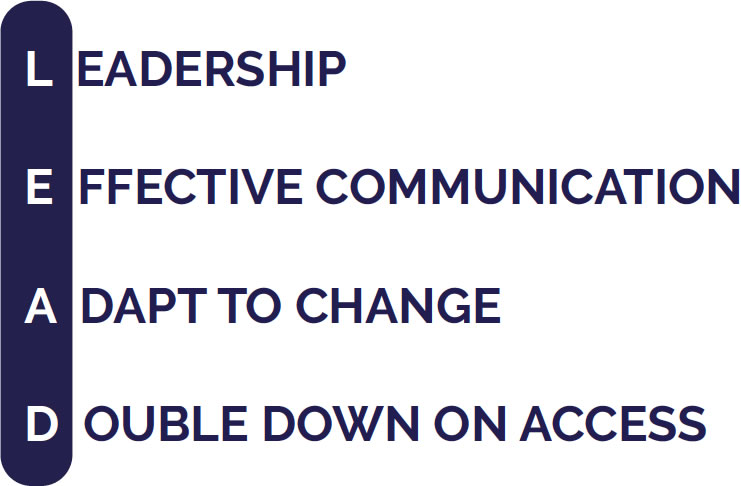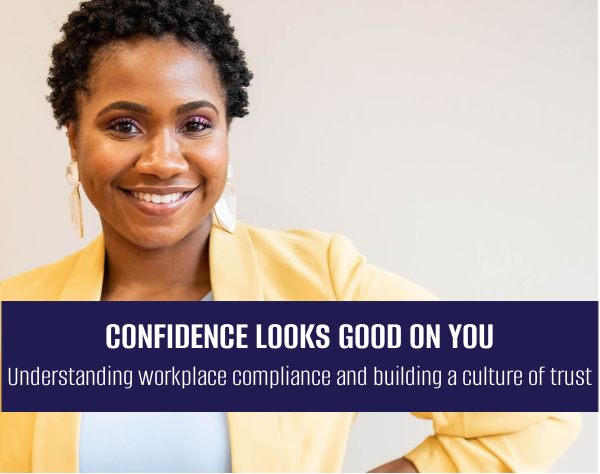With the pandemic era and remote work compounding mental health stress, we are faced with the challenge of bringing the mental health conversation out in the open. Now is the time for leaders to talk candidly about it. If you recognize your workforce as the most valuable asset, you will follow that LEAD.
You can make a positive difference for your employees and your organization by focusing on the four key pillars of the LEAD system.

In today’s post, first in a four-part series, we focus on your leadership. Today we discuss how you can elevate workplace respect and mental well-being by adopting a different leadership style.
Recent data from the U.S. Census Bureau shows nearly triple the number of people experiencing signs of depression and anxiety. Employees are anxious about returning to work, which leads to higher levels of stress, distraction and inadvertently impacts productivity.
Whether your team members are essential, working remotely or returning to the workplace, as a leader you have the unique opportunity to reassure them, support them and give them hope.
The stigma around mental health issues only adds complexity to the pandemic crisis, which is why the first pillar of our four-part series is focused on how your leadership can improve workplace culture.
Leaders are often too frustrated to address mental health issues simply because they don’t know how to talk about it. But there is another more insidious cause that we don’t discuss. That is –leaders are at risk of depression and exhaustion themselves.
It’s hard to maintain optimism when you’re consumed by turnover, productivity, and your own personal challenges. You are human, after all. But there is a way to visualize a better future, even under those tremendous pressures.
My experience coaching leaders shows that small steps can help you make strides in the direction of your own well-being. When I was supporting my client Chloe on her journey to cultivating resilience as a leader, one thing became apparent right away. Juggling staff shortages and grief over losing a loved one left her emotionally depleted and exhausted.
It wasn’t easy to convince Chloe that she needed to take a break, because inertia often blinds you from assessing your real needs; but when she eventually put work on a short pause, life and business started to improve.
Experts will give you all kinds of advice on how to address mental health issues, ranging from sending newsletters and mass emails to your employees. These are necessary and important tools. But my advice? Before you do anything, check in with yourself and your own mental health.
Building a culture of support is a process, and what some leaders don’t understand is that it starts with YOU.
For your organization to thrive in a Pandemic era, when there is a surge of depression, anxiety, and other serious mental health distress, you need to lead by modeling self-care. After you’ve put the “oxygen mask” on yourself, you can take a deep breath and get to work helping others.
If you need coaching one-on-one or if you’re not sure how to initiate self-care, reach out to me at bjones@visionovahr.com and we can set up a call.
If you’ve done the necessary self-care and are ready to elevate the energy of your team, here is a good place to start (courtesy of workplacementalhealth.org) :
1. REASSURE:
People need reassurance to feel calmer and more in control. The more vulnerable and transparent you are, the more trust you build; feel free to share with them that you have many of the same concerns and questions they have. Even if you do not have all the answers,mentioning how these difficult times are impacting everyone, is helpful. Consider talking to them individually, in small groups, online town hall meetings, and at organization wide forum.
2. MODEL GOOD BEHAVIOR & SHOW EMPATHY:
Acknowledge the disruption people and communities are experiencing from the pandemic.Emphasize this is difficult for everyone. You can set the tone and culture of your organization to be one of respect and inclusion. Remind people to take care of themselves and share what they are doing to stay healthy and well. This may mean you getting outside of your own comfort zone as a leader. Communicate that we are in this together. Also, it demonstrates the organization’s commitment to transparency and continuous communication.
3. MAKE MENTAL HEALTH VISIBLE:
Multiple reports show depression, anxiety, substance misuse and other mental health conditions on the rise. Now is the time for leaders to talk openly about mental health. Speak to employees about rising rates of mental health challenges and substance abuse. To see a video I made on the topic (hint: you can model my video and produce one for your team) click here.
Elevate your organization’s culture and address mental challenges and well-being by modeling empathy, respect, and inclusion. It truly is easier, when done together. Reach out to us if you need support. You’ve got this!









